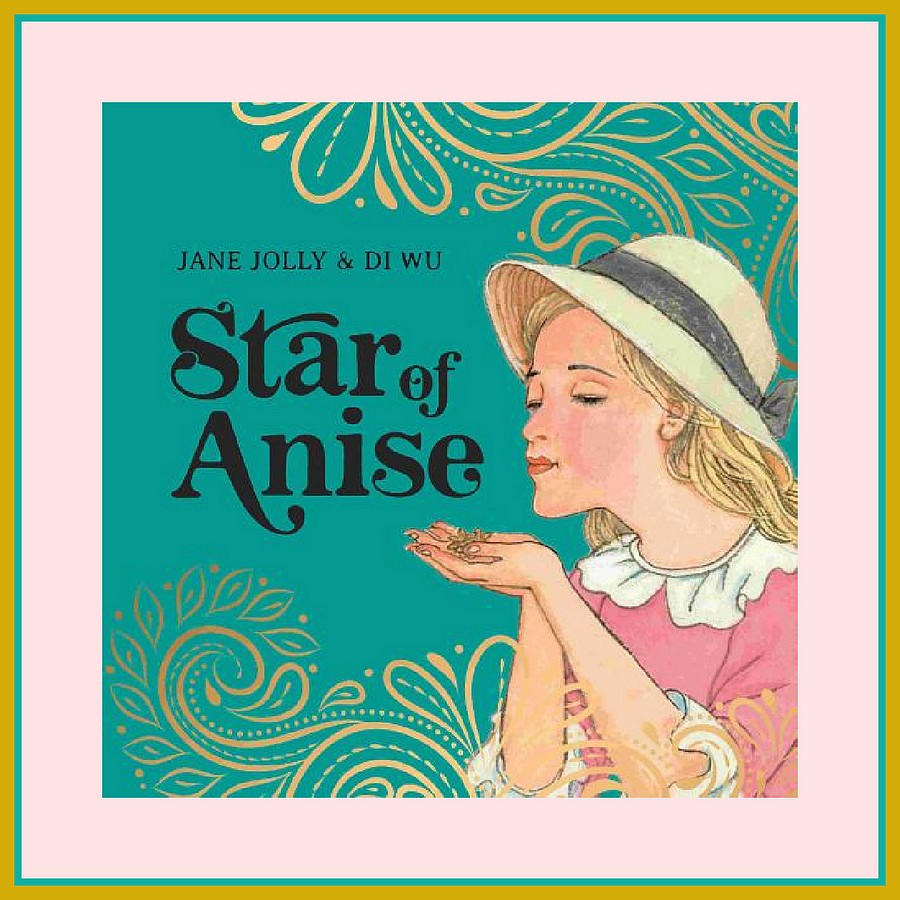
Star of Anise written by Jane Jolly, illustrated by Di Wu and published by National Library of Australia Publishing is a 2022 CBCA Notable book in the Picture Book of the Year category and brings to life a slice of Australian history from the 1850s that is lesser known.
This gentle story is set in the Australian outback and explores a time when Sikh hawkers, Indian men from the Punjab, travelled on horseback with a wagon full of wondrous wares to sell. In this story two children delight in the pleasure of hearing Bhagwan Singh’s wagon before it comes into view. The wagon fills them with anticipation as to what glorious surprises it may hold this time. This treasure trove on wooden wheels has items that jingle and jangle, colourful ribbons that command attention and a friend, Bhagwan Singh, driving. He is clearly excited to see the familiar faces of Annie and Arthur.
Bhagwan warmly greets the children who are enraptured with him. The children are eager to see what is inside the wagon and Bhagwan helps them climb up and peruse the exotic wares, including “silks from Kashmir, soaps from Morocco, spices from Ceylon”. They explore inside the wagon, full of rich colour and textures, shimmering and glistening handcrafted items, enticing scents and a diverse range of selcouth goods. Such a glorious feast for the senses!
Annie’s eyes catch the gleaming sparkle on a piece that Bhagwan had promised on his last visit that he would bring this time. Arthur quickly becomes captivated by a highly decorated and ornate penknife. Still, there are more treats to come in the form of foods. Annie indulges in a meal Bhagwan prepares. It is a treasured family recipe and is an exciting and unprecedented experience for her. She is introduced to chakra pool, known in Australia as star anise. This captivating shaped and deeply scented spice transports Annie to another land. Just as Bhagwan gifts Annie with star anise from his home, she gifts him with a little piece of Australia.
Jane meticulously researched this book and seamlessly weaves much factual information into the story, including fascinating details such as Annie taking Bhagwan’s turban to her Mum for her to wash. At the end of the story is factual information from National Library archives about Hawkers in Australia. This information explores the history of hawkers, Afghan and Indian hawkers, Sikhism in Australia, the process for becoming a hawker, an explanation detailing what the work of a hawker involved and the hawker’s relationship with the community.
Di’s evocative illustrations created with watercolour, pencil and pastels using a soft pastel colour palette enrich the narrative, providing further clues about Australia in the mid-1800s and transport the reader back in time. He deftly captures the children’s excitement of Bhagwan’s arrival to their remote home and how this experience was such a novelty for them. The delight and wonder the children feel is palpable in the illustrations as is the enjoyment they feel when interacting with Bhagwan.
This story highlights the joy and beauty that comes from embracing different traditions and the gift it is to learn from others with rich stories and experiences to share. This was a time when indelible memories were made, invaluable friendships shared and communities enriched by migrants from India who came here for a better life and in doing so contributed to a better life for many people living in rural Australia.
